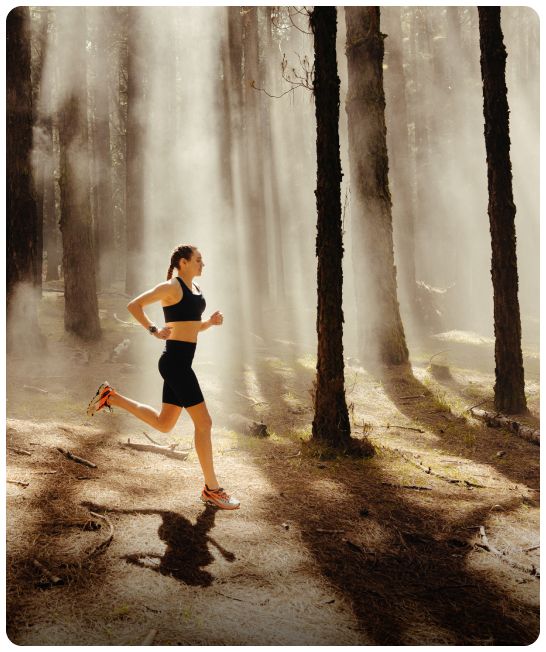
Most people associate trekking poles, quite naturally, with trekking, Nordic walking or cross country skiing. I was one of those people. But several years ago, while doing an 8-day, 200 mile mountain marathon across the Alps, I was awakened to the fact that trail runners can benefit from poles too. I watched with fascination and irritation as numerous people overtook me, all of which were using running poles. At the time, I couldn’t justify the expense, but in retrospect, I wish I had.
Nowadays, the question of whether or not to use poles is hotly debated. With approximately half the top 20 finishers of the Ultra Trail du Mont Blanc running with poles, there is no evidence that they necessarily are better or worse. But to anyone who’s used poles, myself included, few would disagree that they’re a godsend.
I’ve run the Tour du Mont Blanc twice and on both occasions, including the Ultra Trail du Mont Blanc, I was running with poles. And more recently, during the GODZone adventure race with Team Merrell, trekking poles became my best friend as I negotiated snow-capped mountains and boulder-strewn rivers.
Running poles have numerous benefits, including reducing the load on your knees, hip joints and back. They also allow you to potentially move faster over uneven terrain as well as provide balance when crossing rivers.
So, should you decide to take the plunge and invest in a set, here’s how to use trekking poles on trail runs.
Decide on the type of trekking pole

There are various types of trekking poles to choose from, but it’s fair to say most are made of carbon fiber or aluminum. On the whole, the lighter the running pole the better – after all, you don’t want to be carrying extra weight. However, light poles are also more susceptible to breaking, so if you’re a clumsy or heavy runner, you might want to consider aluminum poles.
Once you’ve decided on the material, consider whether or not the trekking poles collapse. Some are foldable, connected together by elastic, while others are telescopic and can be elongated and secured by twisting the pole or turning a lever. Foldable trekking poles have the advantage of being lighter and quicker to assemble, but you need to ensure you get the right length of pole dependent upon your height, because you won’t be able to adjust their length for uphill and downhill sections.
In terms of height, when the tip of the pole is on the ground, your elbow should be bent at 90 degrees. Depending on your own height, you’ll likely be setting it somewhere between three and four feet. Test it out at the store if you can to see what feels the most comfortable.
Get a grip on your running poles

Almost every trekking pole will have a loop attached to the handle. In order to hold it properly, you should reach under and through the strap, so that your hand is gripping both the strap and the handle.
Learn to walk before you can run

The crucial thing to remember when either walking or running with poles is that you should plant the poles an angle behind you, not in front of you. The idea being that you are driving yourself forward with every step.
The best way to practice this is simply to walk, placing each pole down when you step with the opposite foot, making sure you do this for every step. When you’ve got the hang of this, try running. You’ll quickly get a tick-tock thing going.
The only time you might not want to plant your pole behind you is when crossing rivers or using the pole for balance.
Find your rhythm with trekking poles

You simply need to watch a Swiss trail runner using poles to appreciate that it’s a bit of an art form. It’s almost beautiful to watch, as they plant their poles as though skiing down a mountain.
The key is to find a rhythm while you’re running. It’s debatable how much use the poles are on flat, even terrain when running. But they come into their own when ascending. You can find a rhythm and keep ploughing upwards while those without poles stop to take a break and stretch their backs.
Shorten the poles for the uphills, lengthen them for the downhills

It’s fairly obvious that pole length is dependent upon whether you’re going uphill or downhill. If you’re ascending, you’ll need to shorten your poles so that they are the correct height, otherwise you’ll be putting unnecessary pressure on your elbows and shoulders. The same goes for running downhill. This is where adjustable-length trekking poles come in handy. If you don’t want adjustable poles (prefer the convenience of collapsible ones), choose a height that best suits the type of running you do most – or falls close to the middle.
If you’ll be hiking and running with poles they’re definitely a worthwhile investment, especially over that tougher terrain. If not, you may want to try them first before you buy a pair. Ask a friend who has trekking poles if you can borrow them for a run or if they can show you how to use trekking poles personally, to get a feel for your rhythm before you make a purchase. You’ll probably find you love it just like I did!
Are you someone who goes trail running with poles? Let us know what you think in the comments section below.






Posted By Dave
Interesting article, in the photo it looks like you’re using the poles in Death Valley? What would be the benefit there?
Posted By Mara
Great article! thank you. Much appreciated!
Posted By Megan
Wish there was video of Swiss pole runners.